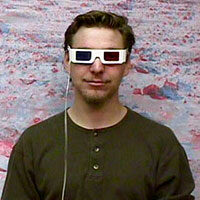


Geology and Planetary Science professor Michael Brown is head of Caltech's Planetary Astronomy Group, which investigates our solar system and the solar neighborhood primarily through surface and spacecraft-based observation. His research activities include the exploration of the outer solar system and extra-solar planetary systems. |
On January 19, 2006, Michael Brown answered selected viewer questions about the 10th planet and other areas of astronomy. Please note we are no longer accepting questions, but see our links and books section for additional information. Below, read answers to a wide range of questions viewers have e-mailed. Q: Why can't Pluto and Xena be classified as both planets and Kuiper Belt objects? Why does it have to be one or the other? After all, for example, Australia is an island, a country, and a continent—each term is an accurate definition. So it is with Pluto and Xena. They exhibit the properties of both categories—planets and KBOs. A: I completely agree. Pluto and Xena are, without question, members of the Kuiper Belt, whether we call them planets or not. So it is best to simply call them both. Q: What exactly are Kuiper Belt Objects? I know they are icy, but what other characteristics do they have and how many of them are there? Why is Xena a potentially special enough KBO to be called a planet? A: There are many millions of Kuiper Belt objects in the region beyond Neptune. They are much like the asteroids, which are in a belt between Mars and Jupiter, but they are composed mostly of ice instead of mostly of rock. Xena is the biggest known object in the Kuiper belt (Pluto is the second biggest). Q: What kind of telescope was used to discover the 10th planet? A: It was special wide field-of-view telescope called the Samuel Oschin Telescope designed to look at as much sky at once as possible. You can learn more about it at http://www.astro.caltech.edu/palomarnew/sot.html Q: Dr. Brown, So much of our solar and cosmic neighborhoods have been explored already using technology that is mostly unavailable to the amateur or student astronomer. What challenges or discoveries, if any, are available to the backyard astronomer? A: Many of the objects astronomers study these days are far too faint for backyard astronomers, but there are still important ways that amateurs contribute. One of these is tracking asteroids very close to the Earth (when they are the brightest) to help determine where they are going and whether or not they have any chance of ever hitting the Earth. Q: Is the new planet a terrestrial planet or a gas giant? A: Neither! It's like Pluto, which is small and icy. We don't have a word for planets like this yet, though. Ice planets? Ice worlds? Q: In the NOVA scienceNOW episode on the 10th planet, astrophysicist Neil deGrasse Tyson has the opposite opinion from you on whether or not we should continue to use the word "planet" as a category. Do you think there's any validity to what he's saying? A: Tyson and I actually mostly agree about the scientific uses of the word planet. Scientists will always talk much more specifically about objects in the solar system and do not need to use words like planet. But people are never going to stop using the word planet in common language, so scientists need a definition that deals with common usage. Q: What do you think is the most exciting part of astronomy right now? A: There are so many exciting things happening in astronomy right now, from rovers on Mars, to finding new planets here and around other stars, to studying the very edge of the universe. The entire field! Q: Does the 10th planet have a disk? A: Not anymore. We think it had one for a short period of time a long time ago, but all of the particles in the ring stuck together to form the moon that we now see around the planet. |
||||||||||
|
|
|||||||||||
|
© | Created January 2006 |
|||||||||||